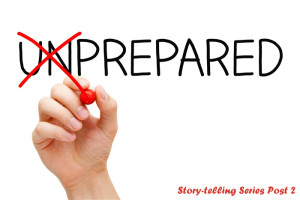In the first post of storytelling series I shared about the art of storytelling and how can we learn this art of storytelling. In this post I’ll share some storytelling preparation tips.
Story telling is not just reading out a story. It’s a serious business. The way you tell a story can win or lose a battle for you as a speaker. Before you tell a story you need to work on the guidelines of storytelling. Following are some tips to make your Storytelling session better.
1. Purpose of the story:
Storytellers tell stories for some reason. Ask yourself why you want to tell the story, what is the purpose for it. If you know the reasons, you can easily pick up a story which will help you to drive the point to the audience. A relevant story has the ability to take the audience where you want them to reach.
2. Master the story:
Master the story inside out before you tell it. To master the story identify the three parts of the story, the beginning, the plot/body and the conclusion. If you know the story, it’ll be easy for you to present the same effectively.
3. Empower Imagination:
Visualization is a great tool. It helps people understand better. To make the story visible to the audience a storyteller needs to visualize it first. Use your imagination to create various characters. If you can visualize the characters, their emotions, the situation they are in, their attire, their tastes, only then you can make your audience see it. Use your body (Gestures & Body language) and voice as tools to help audience visualize it.
4. Beginning:
How we start defines the journey. The same holds right for a story too. Like we have explained in previous post about storytelling – the art, the beginnings matter.
5. Conflict:
Conflict is a spicy food that feeds the listeners.
6. End:
When the story is over make sure you end it too. Don’t just keep going. Let the audience know the story is over without you telling it to them.
7. Practice the Story:
Before you tell story practice in front of a mirror or in front of your friends and ask for their feedback. I know a number of speakers watching their video recordings to improve and improvise in their next workshops. It is told that Adolf Hitler, before going to deliver any speech, was used to practice different styles to deliver the speech in front of a mirror. And look how he grew the ranks in Post WW-1 Germany.
8. Time the Pause:
As you tell the story take your time and give time to your audience. A well timed Pause will give audience a chance to understand verbal and non-verbal components of the story.
9. Make it Interesting:
Make the story interesting to the audience. You can change your voice describing the different characters. Modulation can help you to give different meaning.
10. Don’t Copy:
If someone is popular don’t try and imitate him. You are unique and you have your own style. Find your style; there are people who will love your style.
So these are the points to prepare for a great storytelling session. I hope you enjoyed reading them and will use them in your next training/ public speaking sessions. Do share your views and the difference you could bring by these tips.
